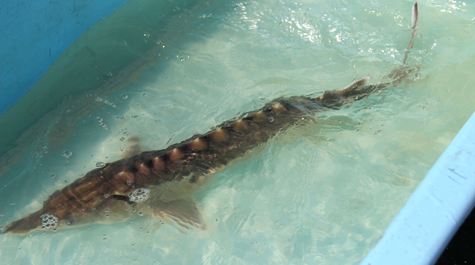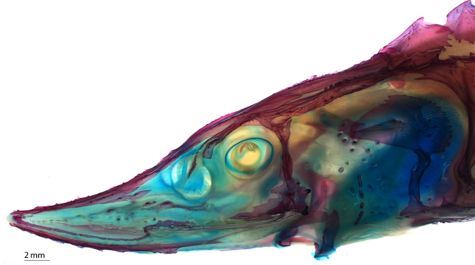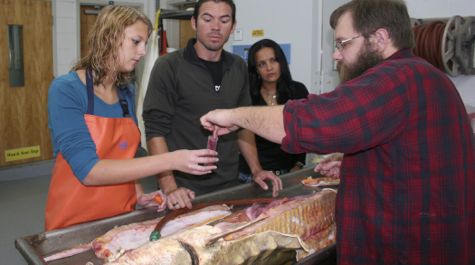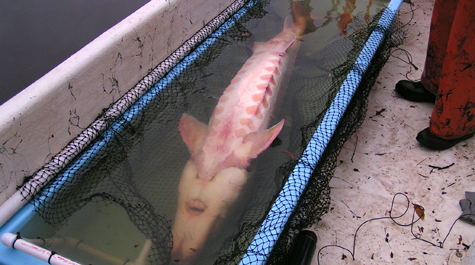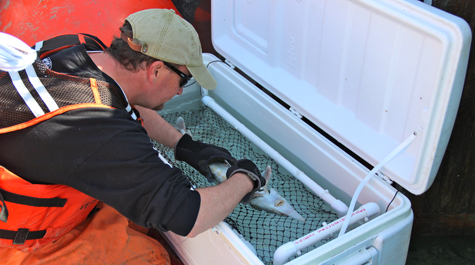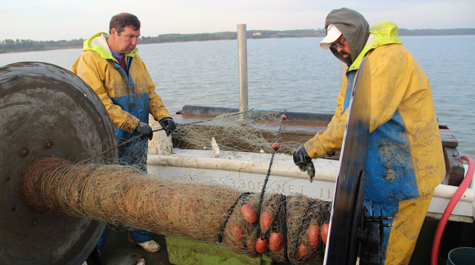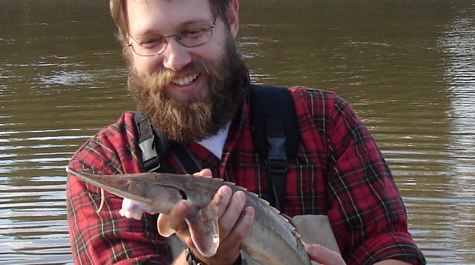Sturgeon Research @ VIMS
Sturgeon are an ancient group of fishes whose fossil record dates back at least 85 million years, to the time of the dinosaurs. But in just the past few hundred years, overfishing and habitat destruction have devastated sturgeon populations worldwide, with 16 of the 27 existing species of these "living fossils" listed as critically endangered by the International Union for the Conservation of Nature.
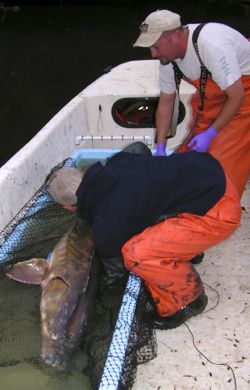 Sturgeon research at the Virginia Institute of Marine Science (VIMS) focuses on efforts to better understand the life history and habitat of the Atlantic sturgeon Acipenser oxyrinchus, whose adults inhabit coastal waters from Florida to Newfoundland and historically spawned in rivers all along the Atlantic seaboard. VIMS scientists are currently studying Acipenser populations in the James and York river systems, historically important spawning grounds for this species in Chesapeake Bay.
Sturgeon research at the Virginia Institute of Marine Science (VIMS) focuses on efforts to better understand the life history and habitat of the Atlantic sturgeon Acipenser oxyrinchus, whose adults inhabit coastal waters from Florida to Newfoundland and historically spawned in rivers all along the Atlantic seaboard. VIMS scientists are currently studying Acipenser populations in the James and York river systems, historically important spawning grounds for this species in Chesapeake Bay.
Knowledge gained by VIMS researchers and their state, federal, and private partners informs the recovery program for this species, whose Chesapeake Bay population was listed as endangered by NOAA Fisheries in 2012. You can assist in these efforts as a citizen-scientist by reporting evidence of a breaching sturgeon.
Research Projects
 Sturgeon Tagging
Sturgeon Tagging
VIMS scientists tag Atlantic sturgeon in the James and York river systems to gain information on their location and movement and thus help identify essential habitat. VIMS' current tagging program is part of a collaborative, 3-year partnership funded by NOAA that includes waterman George Trice and scientists from Virginia Commonwealth University, the Virginia Department of Game and Inland Fisheries, the University of Maryland Center for Environmental Sciences, and Maryland's Department of Natural Resources, in partnership with the US Fish and Wildlife Service and others.
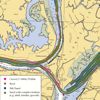 Spawning Habitat
Spawning Habitat
Researchers in the Center for Coastal Resources Management at VIMS used sidescan sonar and underwater videography to scout the James River for potential spawning habitat for Atlantic sturgeon—freshwater stretches with a gravelly bottom, rapid currents, and ample oxygen.
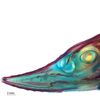 Sturgeon Biology
Sturgeon Biology
Laboratory studies at VIMS of the taxonomy, genetics, and developmental biology of Acipenser and other sturgeon species aid international efforts to accurately classify and manage these ancient fishes.
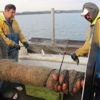 Bycatch Reduction
Bycatch Reduction
Local watermen partner with VIMS researchers on field trials of fishing gear that is designed to reduce the incidental capture, or bycatch, of Atlantic sturgeon in fisheries for striped bass and other species. Funding for these trials comes from the Fishery Resource Grant Program, which is administered by the Marine Advisory Services and Virginia Sea Grant programs at VIMS.


